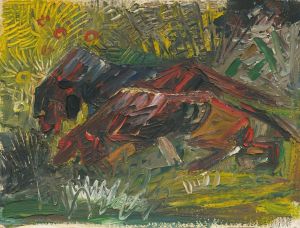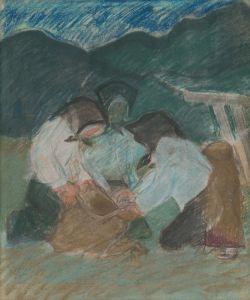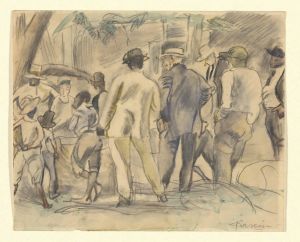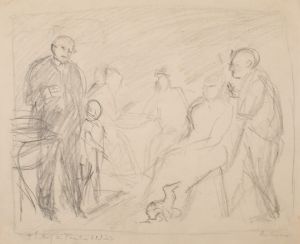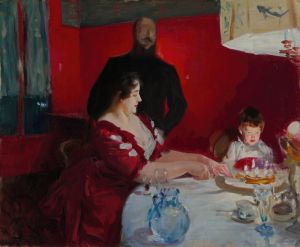
Slovak Family
A hand-painted replica of Arnold Peter Weisz-Kubínčan’s masterpiece Slovak Family, meticulously crafted by professional artists to capture the true essence of the original. Each piece is created with museum-quality canvas and rare mineral pigments, carefully painted by experienced artists with delicate brushstrokes and rich, layered colors to perfectly recreate the texture of the original artwork. Unlike machine-printed reproductions, this hand-painted version brings the painting to life, infused with the artist’s emotions and skill in every stroke. Whether for personal collection or home decoration, it instantly elevates the artistic atmosphere of any space.
Arnold Peter Weisz-Kubínčan was a Slovak painter known for his contributions to modern art in Slovakia during the early 20th century. One of his notable works is "Slovak Family," which reflects his unique style and the cultural context of the time. Weisz-Kubínčan was born in 1898 in Hungary, which was then part of the Austro-Hungarian Empire, and he later moved to Slovakia, where he became an influential figure in the art community.
"Slovak Family" is a painting that exemplifies Weisz-Kubínčan's ability to blend traditional Slovak themes with modernist techniques. The painting captures the essence of Slovak rural life, portraying a family in a setting that is both intimate and reflective of the broader cultural landscape. The use of color and form in the painting demonstrates Weisz-Kubínčan's modernist approach, characterized by bold colors and abstract forms that convey emotion and movement.
Weisz-Kubínčan's work was heavily influenced by the socio-political changes occurring in Europe during his lifetime. The early 20th century was a period of significant upheaval, with the dissolution of the Austro-Hungarian Empire and the formation of new nation-states, including Czechoslovakia, which Slovakia became a part of. This period also saw the rise of various art movements, including Expressionism and Cubism, which influenced Weisz-Kubínčan's style.
"Slovak Family" is significant not only for its artistic qualities but also for its cultural representation. The painting serves as a historical document, offering insights into the lives of Slovak people during a time of transition. It reflects the artist's deep connection to his Slovak heritage and his desire to capture the spirit of his homeland through art.
Weisz-Kubínčan's career was tragically cut short during World War II. As a Jewish artist, he faced persecution under the Nazi regime. In 1944, he was deported to a concentration camp, where he perished. Despite his untimely death, Weisz-Kubínčan left behind a legacy of work that continues to be celebrated for its artistic innovation and cultural significance.
Today, "Slovak Family" and other works by Weisz-Kubínčan are appreciated for their contribution to Slovak art history. They are studied for their unique blend of modernist techniques and traditional themes, offering a window into the cultural and historical context of early 20th-century Slovakia. His work remains an important part of the Slovak cultural heritage, and efforts have been made to preserve and promote his art for future generations.
In summary, Arnold Peter Weisz-Kubínčan's "Slovak Family" is a testament to the artist's skill and his ability to capture the essence of Slovak life through a modernist lens. The painting is a valuable piece of art that reflects the historical and cultural dynamics of its time, ensuring Weisz-Kubínčan's place in the annals of Slovak art history.








